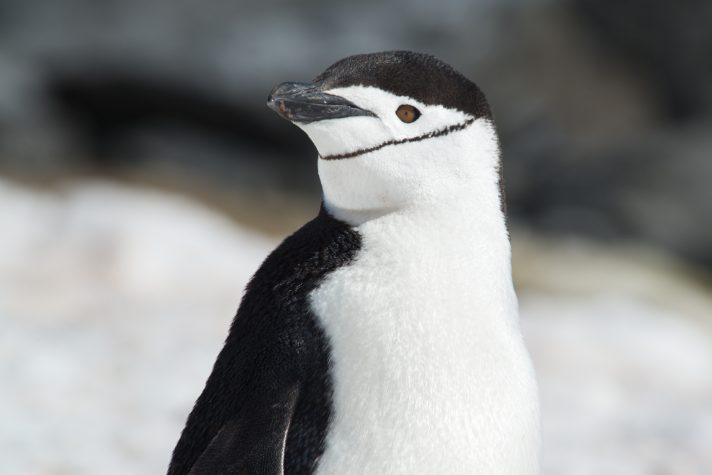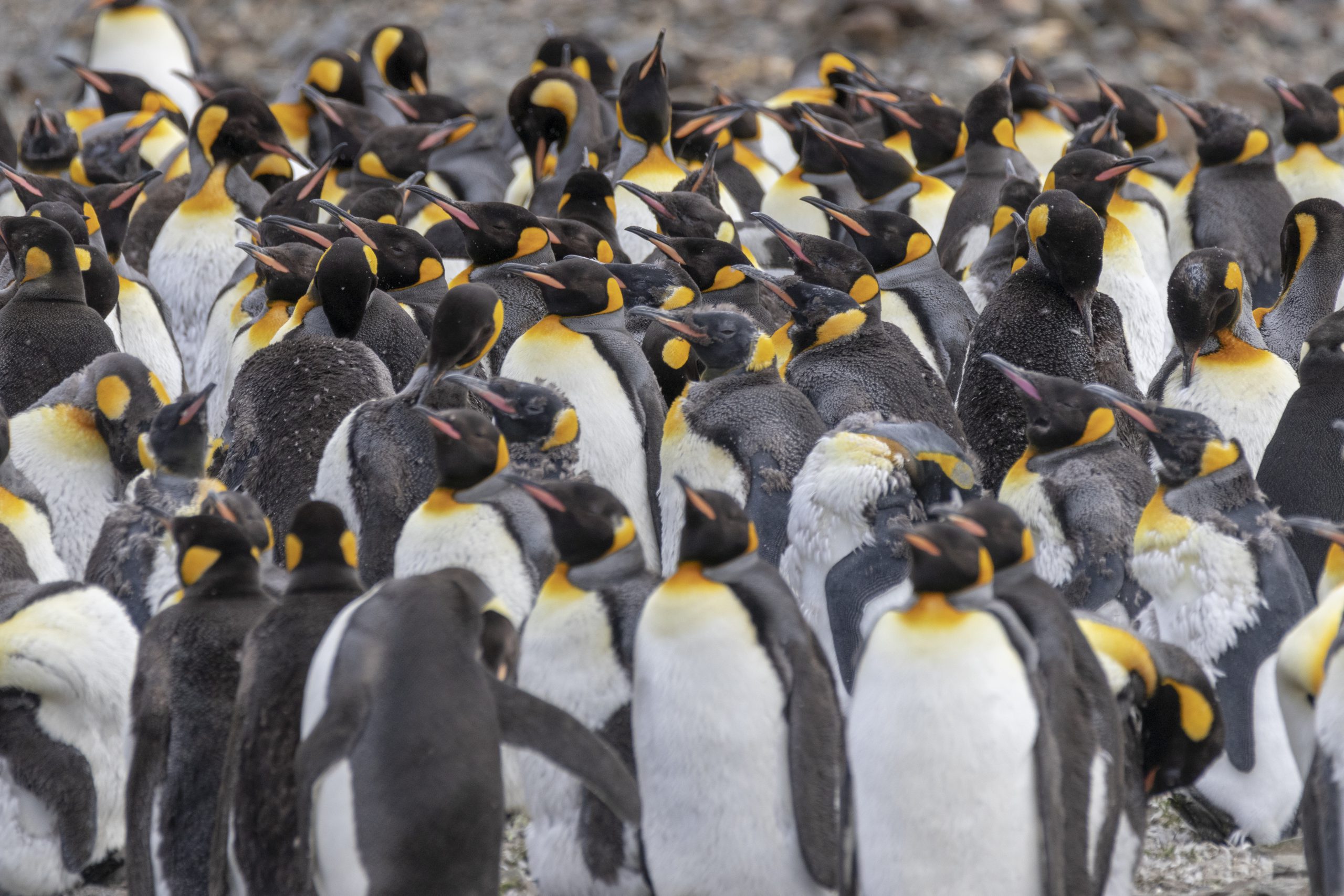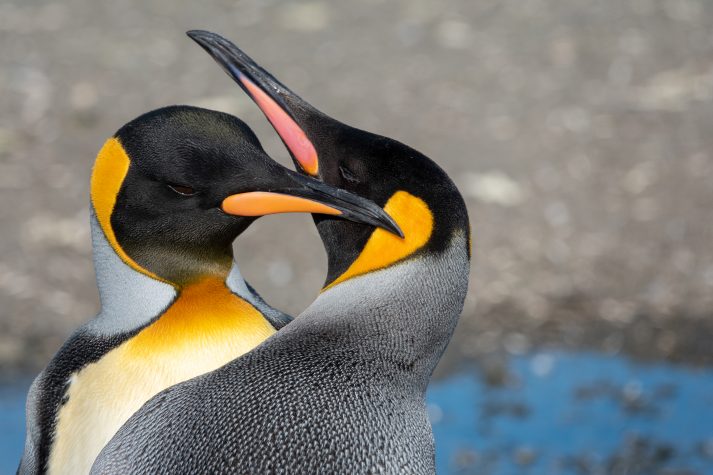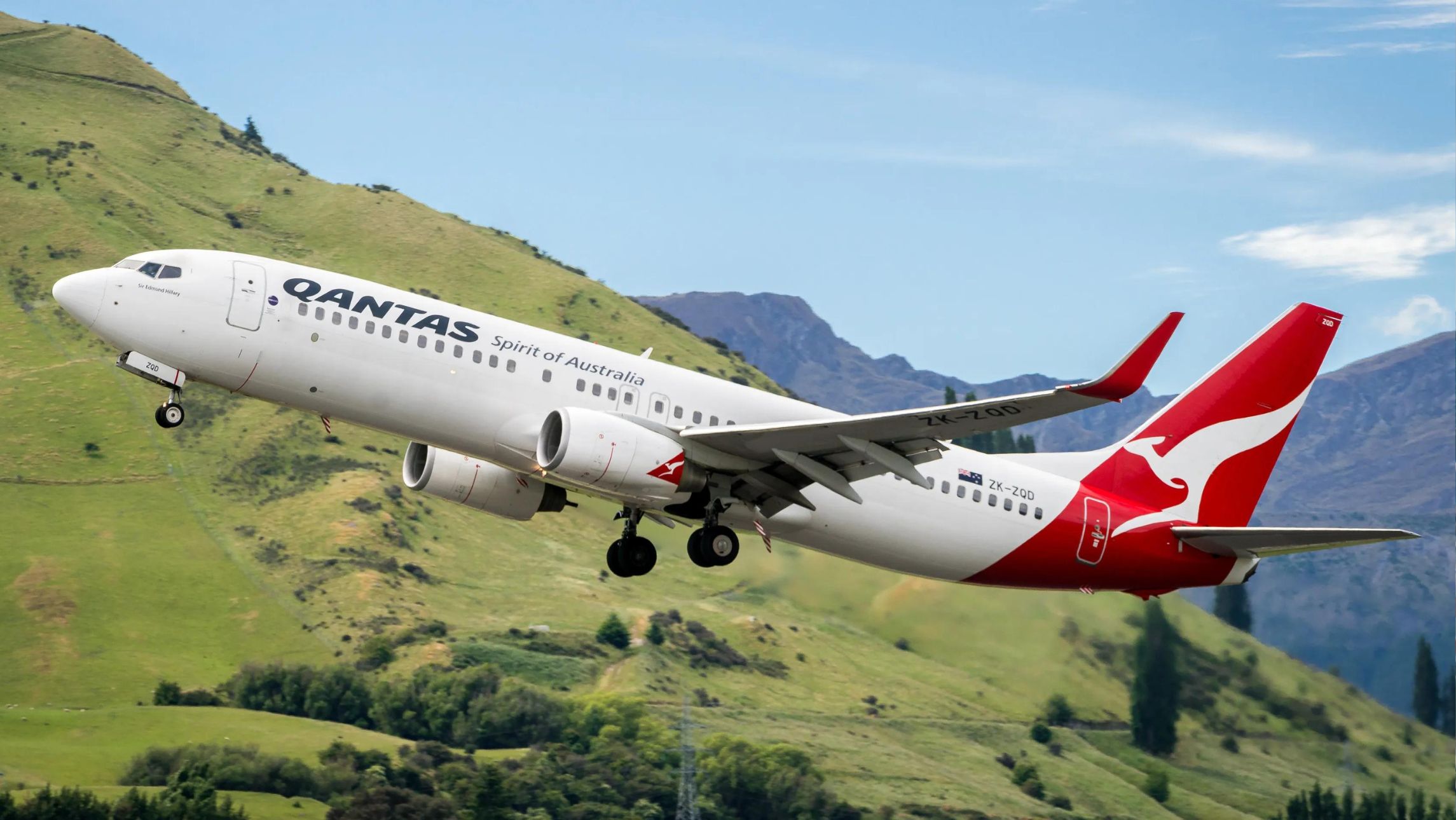Waddling penguins have always been the bucket list drawcard for curious travellers to the Antarctica.
They will brave icy winds and piercing cold of the frozen continent to watch these adorable birds. They come away mesmerised and wanting more.
So what is it about these flightless birds that have fascinated travellers all these years?
Penguins only live at the South Pole, occupying the frozen continent of the Antarctica. There are a total of 17 species, but only seven can be found living and breeding in Antarctica.
The most common species is the Chinstrap penguin. You just have to look at the narrow black band under its chin to understand where the name came from.
The second-most common species is the Adelie penguin, with more than 2.3 million pairs living in Antarctica. Then there are the biggest birds of all: the Emperor penguins, standing proudly tall at an average height of 114 cms.
 Penguins are fast swimmers. Known as “flippered flyers” they can easily chalk up to 40 kms an hour in water. But they cannot fly – their wings are made for swimming, not flying. Female penguins can often swim up to 80 kms to reach the open ocean to find food, especially krill.
Penguins are fast swimmers. Known as “flippered flyers” they can easily chalk up to 40 kms an hour in water. But they cannot fly – their wings are made for swimming, not flying. Female penguins can often swim up to 80 kms to reach the open ocean to find food, especially krill.
 One of the amazing sights of Emperor penguin colonies on Antarctica is how they huddle together to keep warm and escape the wind. As each penguin becomes warm, it will move to the outer perimeter. Also, male Emperor penguins are able to stand for 65 days through icy temperatures and wild storms to keep their eggs warm – even if temperatures fall below -60C.
One of the amazing sights of Emperor penguin colonies on Antarctica is how they huddle together to keep warm and escape the wind. As each penguin becomes warm, it will move to the outer perimeter. Also, male Emperor penguins are able to stand for 65 days through icy temperatures and wild storms to keep their eggs warm – even if temperatures fall below -60C.
One of the best ways to get up-close and personal with these fearless birds is to travel with the environmentally friendly expedition line, Hurtigruten which has an all-inclusive Antarctica package including international flights from $10,999 per person if bookings are made before 18 December 2020.
The reason why travellers choose Hurtigruten is that the line has the lowest CO2 footprints of any expedition voyage to the Antarctica. It also has an amazing array of itineraries for travel in 2021/22/23 with more than 60 departures. And passengers have the choice of sailing on the world’s first hybrid-powered expedition ship, MS Roald Amundsen, or the MS Friftjof Nansen and the nimble MS Fram.,
You can choose a 20-day itinerary on MS Roald Amundsen to the Antarctica, Chilean Fjords and Falklands to experience the solar eclipse in the South Orkney Islands with an expert astronomer and explore the unique beauty of Patagonia. The cruise departs on 23 November 2021 with prices starting from $20,000 pp including flights.
In addition, you can cruise on Hurtigruten’s latest hybrid ship, MS Fridtjof Nansen to the Frozen Continent, on a 14-day expedition to experience the best of what Antarctica has to offer, with prices starting at $10,999 pp and departures from 17 November 2021 to 7 March 2022.
Hurtigruten has also introduced a more relaxed cancellation policy. If bookings are made before 31 December 2020 for any itinerary in 2021 and 2022, you can take advantage of the line’s “Book with Confidence” policy: if you cancel the cruise for any reason in the future, you will receive your refund, including your deposit, within 14 days.
For more information, visit hurtigruten.com.au.
To prepare for your encounter with the tottering penguins, here’s a list of what to expect from the more popular species.
Chinstrap penguins
These penguins have a band of black feathers that run from the top of their heads, under their chin and back up again – exactly like the chinstrap of a bike helmet. Hence their name. They also have a peculiar, if not amorous breeding habit. Male Chinstraps race to find the best nest then waits for his mate for five days. If his mate fails to show up, he will move on. However, if his original mate returns and finds him with another mate, the female penguins will fight for his affections. How opera-like.
Adelie penguins
Hard to tell the male Adelie from the female. They are very egalitarian penguins, with both taking equal responsibility of looking after their chicks.

Gentoo penguins
Gentoos are the best swimmers and can dive to reach speeds of up to 35 kms per hour. They spend most of their time in the water hunting for krill and squid and usually weigh about 5kg each.
 Emperor penguins
Emperor penguins
Emperors are the tallest and best-dressed of all penguin species. They can reach up to 1.2m tall and weigh up to 45kg each. They have the most distinctive markings with bright yellow and orange plumage around their heads, necks and chests. They huddle together for warmth and to get through the icy, Antarctica weather and take turns to stand on the perimeter.
For more information, visit hurtigruten.com.au.









